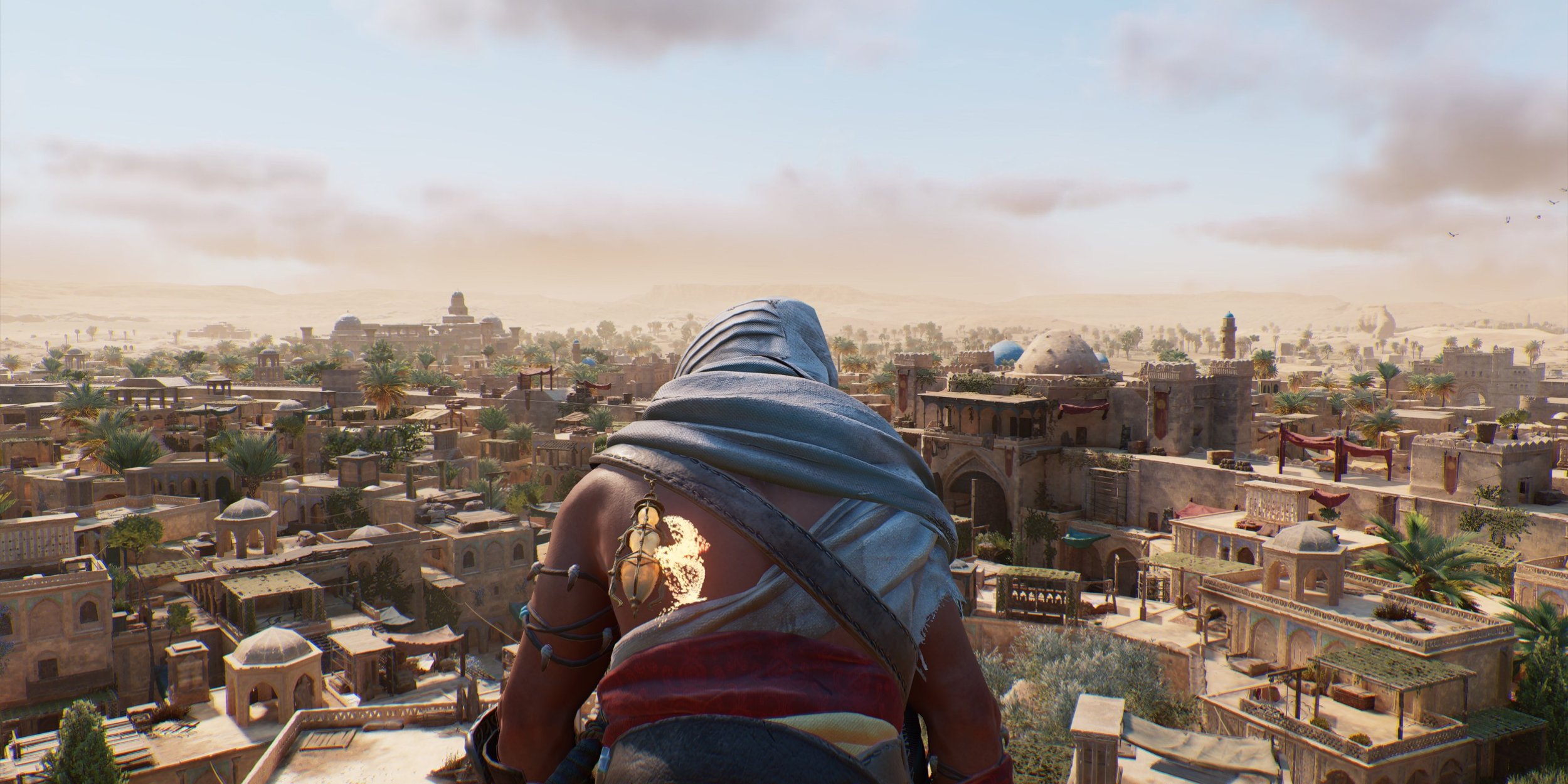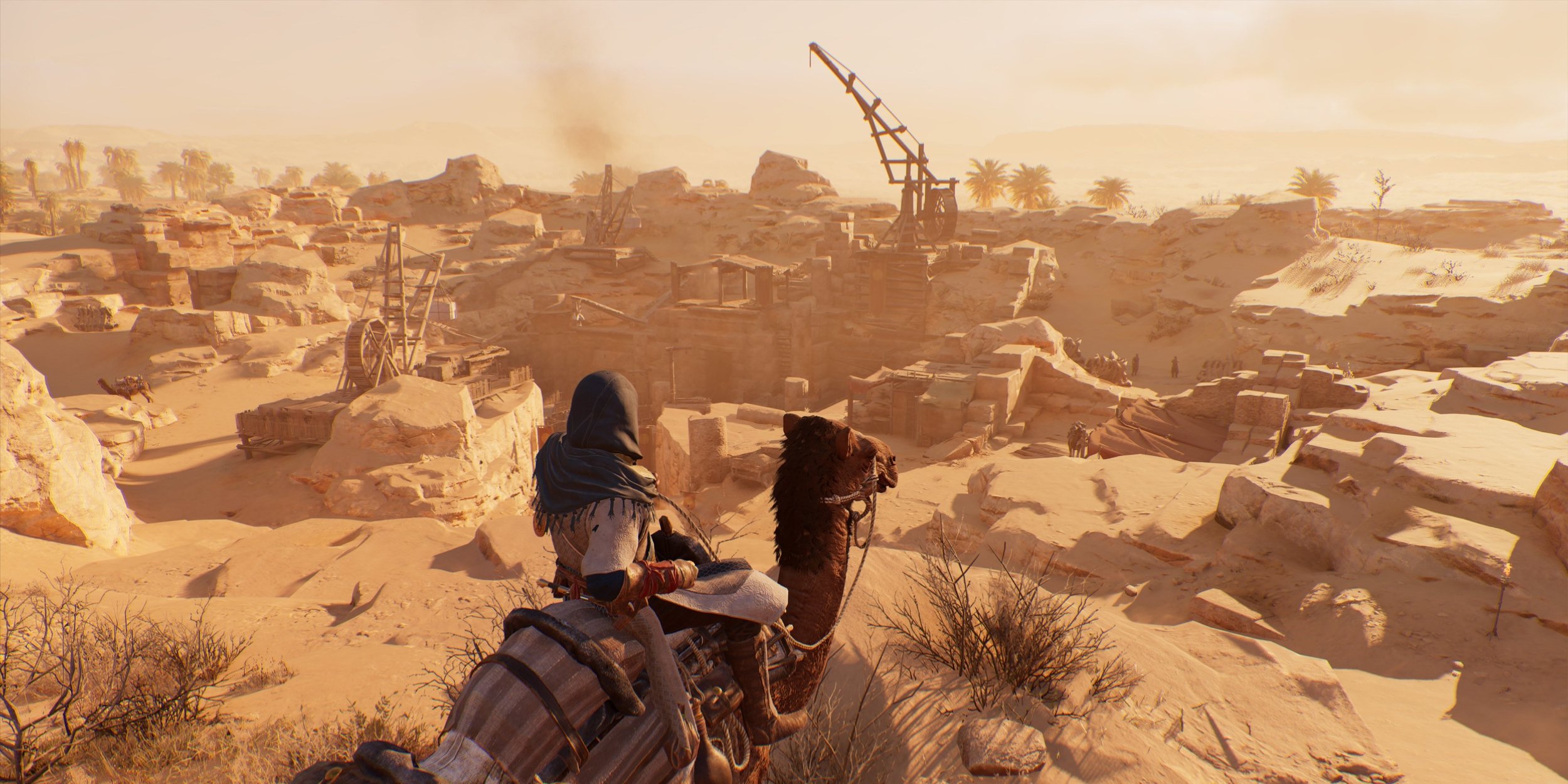Archaeological Opinion on Assassin’s Creed: Mirage
A week later, I am returning to Assassin’s Creed: Mirage to talk about my reaction in a second part. There will be more story spoilers in this one, but I will try to stay away from any big plot twists or reveals. I mostly want to continue talking about how the game felt to me as an Archaeologist (and Classicist), and how I thought the game worked as a historical piece.
Baghdad
Showing off a bit of Baghdad
The city of Baghdad continued to feel alive throughout the rest of the game. Basim’s relationship with the people of the city continued to evolve and change, particularly his actions on the part of Ali ibn Muhammad’s group of rebels. There was quite a lot of intentional work on the part of the game as to how the rebels and the various political parties interacted with each other, how they all used their respective ideals to shape their campaigns, and how they worked together to try to free Baghdad from the oppression of the Order.
It all comes together as a breathing piece of history that I mentioned was special due to the nature of what is known about this time period in Baghdad in my first reaction to Assassin’s Creed: Mirage. Additionally, the politics reflected a lot of continuing real-world struggles on the part of people everywhere, as the Order (with the aid of the government) started targeting people from outside of Baghdad and encouraging xenophobia.
Basim, on the other hand, handles this with surprising gracefulness in most situations, being accepting toward a Christian monk who wants to take the bones of his saint to his own church, helping out the foreigners in the marketplace who are being targeted, and refusing to play into the fear that surrounded those situations. He is a good representation of someone trying to do their best to help people as much as he can.
The Past
As I mentioned in my last post about Thrawn’s Representation in Ahsoka, the past being used as propaganda is not a new topic. In fact, looting is the second oldest profession in the world, and cultures have always used the past or things related to it (such as ancestors) to further their agendas - good or bad.
Worse examples of this are the Nazis appropriating Archaeology and the past in order to force their regime on Europe (see Bettina Arnold) but people use the past for good causes as well, such as using Mother Teresa or Ghandi or other respectable historical figures as a standard to live by. Assassin’s Creed: Mirage does a very good job of representing this. Such a good job, in fact, that it deserves its own article (coming soon) and would take too much time to cover in one post.
That being said, all sides of the struggles in Baghdad are searching for articles of the past, searching for the power the past represents, or deliberately attempting to conceal the past to protect people from it (which doesn’t end well). Even Basim searches for artifacts of the past to trade with Dervis as a main collectible in the game. The past is shown and proven to be a powerful tool throughout the game.
Abstergo’s Absence
Interestingly enough, Ubisoft decided to keep the modern-day elements of the series out of Assassin’s Creed: Mirage. Usually throughout the games, there is a tie back to the modern day, with the most recent three games all flashing forward in time to Layla, who herself was a (sketchy) archaeologist, searching for answers in the past. The only main element connecting this game to others was Nehal’s Calling Quest line which resolves at the end of the game.
Even then, there is no direct connection to the modern day, which might be due to the fact that Mirage takes place almost directly before Assassin’s Creed: Valhalla, where Basim also plays a role in the various events. This game’s ending gives hints as to Basim’s activities later but does not actually tie directly to them. So they might have kept the modern-day events out of it so that they didn’t have to go back in time with Layla’s arc.
Personally, I always found the modern-day bits a little boring gameplay-wise, so this wasn’t necessarily missed on my part, but with the games being typically very formulaic I did expect to see something as the game went on, even if it was a cutscene at the end of the credits. The screen did say “Desynchronization” whenever Basim suffered an untimely death, so there is still that connection to modern historical researchers potentially looking into Basim’s life.
Conclusion
As an Archaeologist seeing the past city rendered in such a way and the people in the game dealing with the ramifications of their own history was quite nice. Even without my inner archaeologist, the game eliminated a lot of the need for heavy grinding and allowed players to enjoy the story in a streamlined fashion without completely erasing the RPG elements the series has gained. The gameplay was mostly seamless, and even when Basim struggled to climb something it didn’t break the game. Overall, I thoroughly enjoyed the experience and plan to try for that elusive Platinum trophy.
Expect at least one more very specific and detailed article about the Past as Currency in Assassin’s Creed: Mirage next week, and I will be continuing to talk about Star Wars because I keep going back. In the meantime, what’s your favorite game in the Assassin’s Creed franchise?





